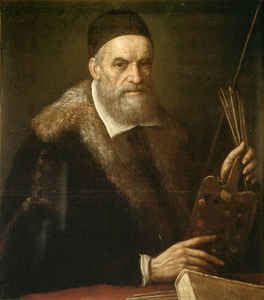Name Giovanni Bassano Role Composer | ||
 | ||
Similar People Cipriano de Rore, Dario Castello, Orlande de Lassus, Andrea Gabrieli, Giovanni Gabrieli | ||
Ricercar xi by giovanni bassano 1558 1617 for viol consort
Giovanni Bassano (c. 1561 – 3 September 1617) was an Italian Venetian School composer and cornettist of the late Renaissance and early Baroque eras. He was a key figure in the development of the instrumental ensemble at St. Mark's basilica, and left a detailed book on instrumental ornamentation, which is a rich resource for research in contemporary performance practice. It was Bassano who was most responsible for the performance of the music of Giovanni Gabrieli, who would emerge as one of the most renowned members of the Venetian School.
Contents
- Ricercar xi by giovanni bassano 1558 1617 for viol consort
- Giovanni bassano fantasia a tre voci viol consort
- Life
- Published works
- References
Giovanni bassano fantasia a tre voci viol consort
Life
Giovanni was likely born in Venice around 1560 or 1561 in the parish of San Maurizio, the son of Santo Griti da Sebenico and Orsetta Bassano. Orsetta's father Jacomo Bassano was the only brother out of the six sons of Jeronimo Bassano not to move permanently to London from Venice around 1540 as part of a new recorder consort to King Henry VIII. Santo seems to have taken over his father-in-law's instrument-making business and adopted the surname of Bassano for himself. He was the probable inventor of bassanelli.
Giovanni Bassano arrived as a young instrumental player at St. Mark's probably in 1576 at the age of 18. He quickly acquired a reputation as one of the finest instrumentalists in Venice, and by 1585 had published his first book, Ricercate, passagi et cadentie, which details exactly how best to ornament passages when transcribing vocal music for instruments. In that same year he became a music teacher at the seminary associated with St. Mark's. In 1601 he took over the job as head of the instrumental ensemble from Girolamo Dalla Casa, and he remained at this post until his death in August 1617.
In addition to directing the music at St. Mark's, Bassano was busy elsewhere in Venice; he directed several groups of piffari, bands of wind players including bagpipes, recorders, shawms, flageolets, bassoons, and conceivably other instruments, which were used in other churches (such as San Rocco) or even street festivals.
Bassano was also a composer, though his music has been overshadowed by his renown as a performer and his associated performance treatise. He wrote motets and concerti ecclesiastici (sacred concertos) in the Venetian polychoral style; and he also wrote madrigals, canzonettas and some purely instrumental music. His canzonettas achieved some fame outside of Italy: Thomas Morley knew them, printing them in London in 1597 in English translation.
Some of Bassano's instrumental music is ingeniously contrapuntal, as though he were indulging a side of his personality he was unable to display in his more ceremonial, homophonic compositions. His fantasias and ricercars are densely imitative and contain retrograde and retrograde inversions of motivic ideas, a rarity in counterpoint before the 20th century.
The similarity of Bassano's motets to the early work of Heinrich Schütz, who studied in Venice with Gabrieli, suggests that the two may have known each other; likely Schütz knew Bassano's music.
